I’ve been living and running in the state of Oaxaca in southern Mexico for over three years now and it hasn’t always easy to find longer distance races. For this reason I was delighted to see a notice for a Q50 80km ultra marathon in Barro Jaguar nature reservation close to the state capital of Oaxaca de Juarez. I’d already run two 50k ultras in the US and one of these had a pretty serious gradient, but I knew that the climate and altitude (1500 meters) would make the Oaxaca Q50 an entirely different proposition. I wasn’t wrong.
It was out of bed by 4am for a lift to the 6am start which was subsequently delayed until 6:30 to ensure that all the runners had the compulsory equipment of a water bottle, lamp and whistle. During this time the organisers also took the opportunity to introduce some of the athletes taking part. The field included a lot of well know distance runners from Mexico as well as visitors from Japan, Norway, the USA, Argentina, Uruguay, Italy, Ecuador and Columbia. It was a very strong field and I was happy enough to be introduced as being English since most Mexicans think Scotland (mum) and Northern Ireland (dad) are parts of the United States.
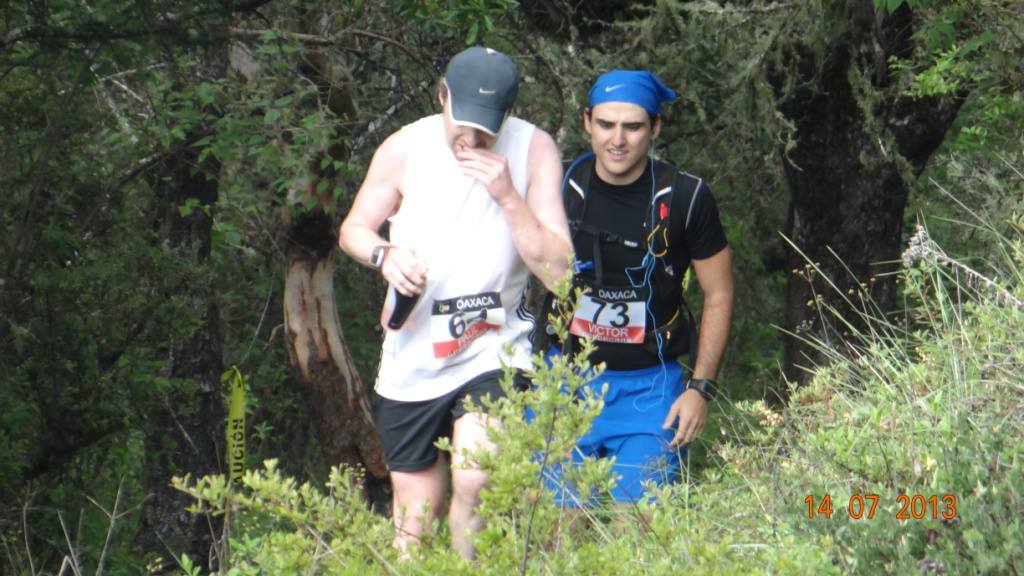
On the count of ten, off we set. The start of the race was rather pleasant with the hundred or so runners lighting up a single track gently undulating in and out of the woods. Two weeks prior to the race I’d been laid up with the flu before having to wind down so it was great just to get my legs moving again. July is generally the best time to run in this part of Mexico as the rains make it cooler and everything’s turned a nice shade of green. This was also a perfect day for running since the cloud held for most of the race and the rain confined itself to a cool drizzle. From the third kilometre on into the first aid station at the eighth we had a pretty harsh intermittent climb opening out onto a more solid wider track. At around the ten kilometre mark things became a bit ominous when the mountain appeared. This monster towered above us with nothing less than a 750 meter climb over five kilometres on top of the 500 we would have already ascended before reaching it. Thankfully the summit was to be the highest point of the day. Overall we would end up going up and down more than 4,000 meters. Not accounting for fatigue, this was the most physically demanding part of the course, including hand over hand rock climbing around spiny maguey plants and through thick scrub. Leaving the mountain with shaky legs and a 60k trek ahead was somewhat of a daunting prospect so I held a modest pace for this section.
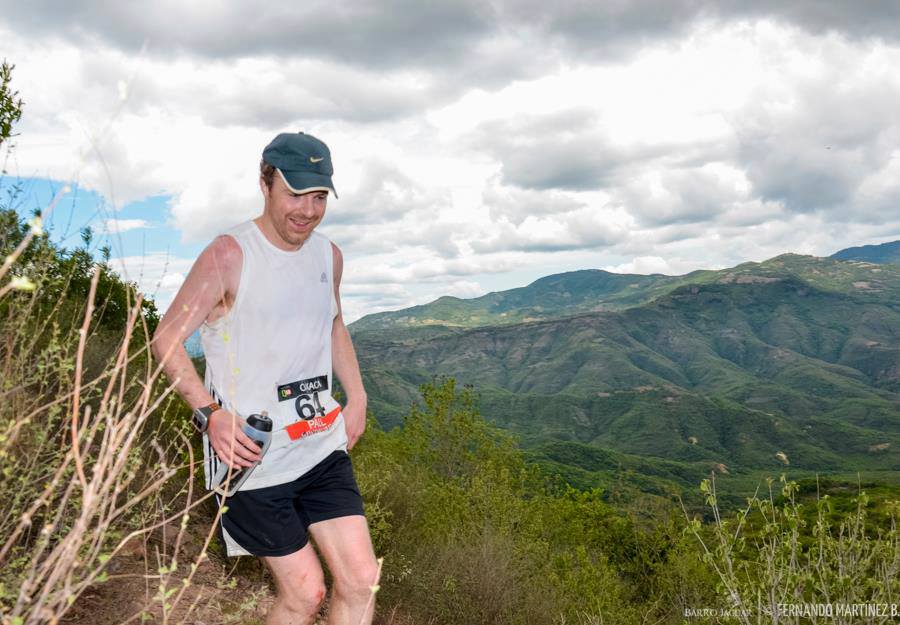
At the end of the climb we skirted the rim of the mountain on an uneven path with a terrifying drop on our right hand side. The apex was punctuated by a photographer and a park ranger with a rifle. The view here, and for much of the race, was absolutely fantastic. The course remained difficult here on-in as the hard climb gave way to a steep descent over loose stony ground. This was often covered by pine needles or leaves making it difficult to see the rocks underneath. A high level of concentration was required to avoid tripping to suffer a nasty fall. Sadly, one of the early leaders, Oaxaca’s own Octaviano Robles, fell around this section breaking a rib and perforating his lung. Fortunately Octaviano is close to a full recovery and is already looking forward to the Mexico City marathon! I managed to survive this section with nothing more than blooded knees and ankles only by slowing down a lot. Other runners fainted or threw-up. By the next aid station at 27k the worst of the first half of the course was over and I took the opportunity to fill up in preparation for the long slog ahead. And so with a full belly I followed the winding road toward the picturesque town of San Baltazar. As I spoke to other runners on the way into the town I became increasingly aware of the general feeling that this was a very tough course. Moreover, it looked like we were in danger of missing the cut-off time of 2:30 at the half way point. At least these guys looked like decent runners and I knew it wasn’t just me falling behind. As we made it past another frantic aid station and the welcoming crowds of San Baltazar we moved off the roads again and back into the countryside. Here the markers became less frequent and it was easy to get lost so we tended to bunch up into small groups. Eventually about five or six of us made our way together downhill back to the half way point, which was actually at 43k, where the race crossed over the start/finish line. We crossed the line about two minutes before the cut off, but the other guys decided to call it a day and leave the race.
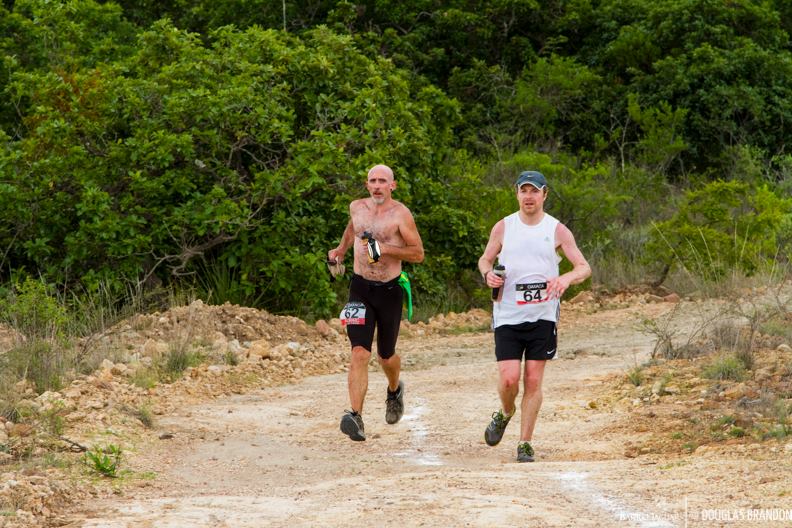
At this point I was dejected, tired and reluctant to go on alone for fear of getting lost. On the other hand I didn’t want to return home with only half the race finished so I tagged onto the next group of runners. I guessed I might hang on until maybe the penultimate aid station due to appear at around 65k. In the end it was a relief to rejoin the mildly undulating track I already ran at the start of the race and I was able to recover a little joy and energy before taking the turn uphill into the second loop. The next part of the race was on solid track for a while before turning onto an uneven single track until the 60k point where it turned back unto road. The solid track gave me a boost but after leaving the road and returning to a downhill single track the cloud broke and my legs started to hurt in the heat. At this stage I could only stumble downhill and jog along a bit on the flat. Still, I don’t think anyone around me was doing so well either since I didn’t see any other runners other than the 2nd lady who was holding a strong pace and keeping a close eye on the cut off times.
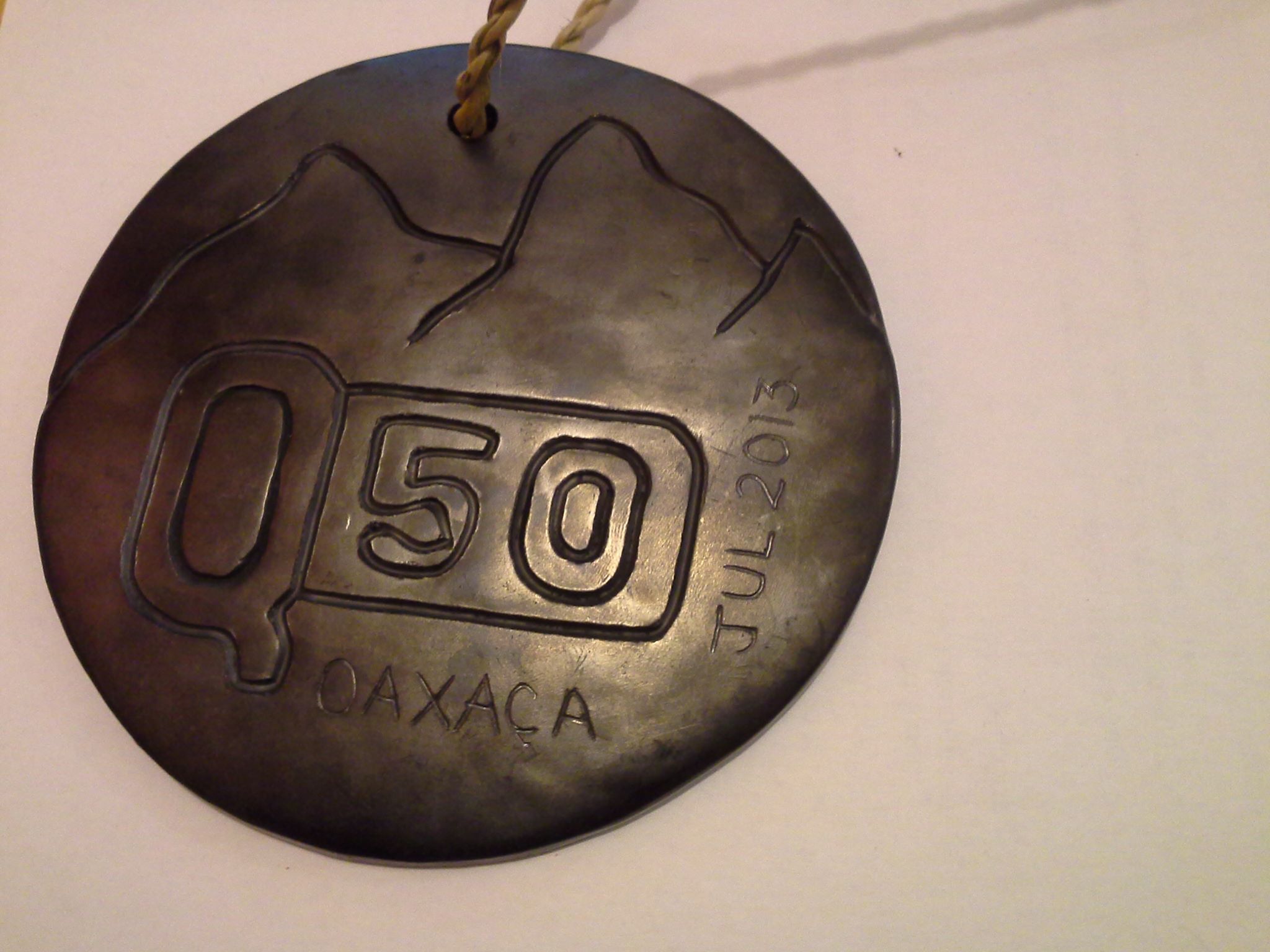
At around 65k the trail became intermittent and I was struck with despair and cramp. I hadn’t remembered the exact mileage of the aid stations and was sure I would miss the cut off at the next one (wherever that was). Luckily another runner heard me struggling and stopped to give me some heat rub for my cramped legs. This was a really nice gesture. I’ve never actually tried a heat rub during a race and I think I got more of it in my mouth than on my legs trying to open up the packaging, but it seemed to work, at least just well enough to get me going again. Then it started to rain which was a glorious relief from the heat. I even managed to catch another few runners after the track turned back into road. After getting lost for a bit, we finally reached the last aid station – the penultimate station had been moved to be replaced with a water stop and I hadn’t taken heed of it. I was delighted to be so near the end but this was physically the lowest point of the race. What remained was a 500 meter climb over 3k followed by a further 3k of rough undulating single track. It was already dangerously close to the cut off time of 14 hours. So, it was a brisk march up the winding path of the hill that never seemed to end and a run on empty legs to the finish. In the panic and jubilation of having the end in sight I even managed a sprint up the small hill right at the end to finish more than a minute under the cut off. It was a great feeling of satisfaction but my legs were in agony and it was already 8:30pm and dark. In this part of Mexico close to the equator the dusk only lasts about 15 minutes. I picked up my finishers medal, hand crafted in Oaxaca, and went to speak with the other runners. I found out that the leaders had finished in around 12 hours so my time mustn’t have been too bad. It felt great just to finish running and complete the race.
[vimeo 71394213 w=500 h=281]
On reflection I’m quite sure there was a degree of flexibility with the cut off times due to the difficulty of the course. In fact, I saw quite a few people finish after me. There were actually quite a few complaints about the difficulty of the race as well as things like missing/unclear markers, a bus not turning up for transport to the 40k race and a the regularity of aid stations. The majority of people, however, gave positive feedback and seemed to really enjoy the race. If they didn’t finish they wanted to return again to try and ‘beat the mountain’. It’s hard to speak on behalf of other people but I hope the race team can learn from the problems reported and return with better organization next year. I also hope the local organisers who worked with the international Q50 race team can learn from their experience to improve the quality and variety of our local races. There certainly didn’t seem to be any lack of enthusiasm from either side and from my own personal perspective the race was a very positive experience and a great challenge. However, if you ever plan to do a race like this I would strongly recommend you carry enough supplies for at least 20k unassisted and use a GPS device with the route or at least a paper map and compass, just to stay on the safe side. I’d also suggest doing another easier ultra beforehand and put in at least four or five months training for running in the hills if that isn’t already your type of thing. And, of course, the most important part is to enjoy yourself while doing it!
Happy trail running!!

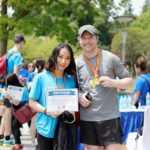
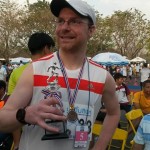

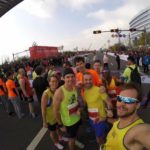
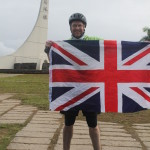
Leave a Reply